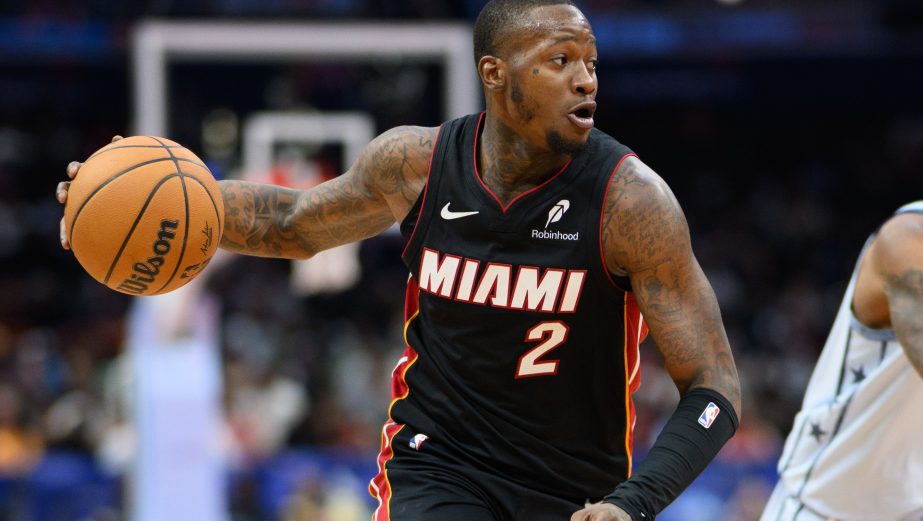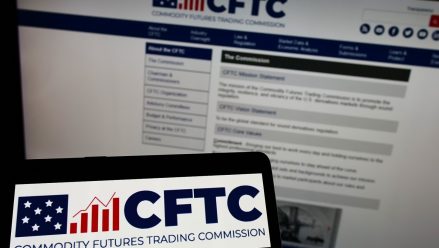DraftKings, one of the twin titans of U.S. online sports betting, recently announced the acquisition of prediction market Railbird Exchange. The move was a stark admission: The state-by-state regulated sports betting model is under existential threat from federally licensed prediction markets like Kalshi, which have operated nationwide in large states lacking legal sports betting, such as California and Texas. This regulatory arbitrage has fueled massive growth in exchanges, helping wipe out billions in market capitalization from giants like DraftKings and FanDuel.
DraftKings’ move is a bold one, potentially risking its state licenses or drawing the ire of state regulators in order to get a head start on building a product that can compete in a near-future gambling market that includes more than one type of platform (and more than one type of regulatory body). It leaves the rest of the industry wondering what that near-future will even look like.
Two people who think they have an idea what the near-future holds are Jim and Maureen Downs. Their company, Connamara Technologies, built the exchange platform (EP3) that powers ForecastEx, a major prediction and event market licensed as both an exchange and a clearinghouse by the Commodity Futures Trading Commission (CFTC).
For decades, the Downses have been market architects, watching technology fundamentally reshape trading, from the grain pits of the Chicago Board of Trade to the options floor of the CBOE. They didn’t just foresee the rise of prediction exchanges; they built the engine making the challenge possible, and they believe this disruption is inevitable, and likely a good development for retail customers of sportsbooks and exchanges.
The core conflict driving the current merger-and-acquisition frenzy is regulatory. Traditional sportsbooks operate under licensing regimes dictated state-by-state, which subjects them to high state taxes and intense scrutiny. Prediction markets, on the other hand, have argued that they should be allowed to operate under the Commodity Exchange Act (CEA) with federal licensing through the CFTC. This would enable them to offer products, including sports-related contracts, nationwide. This divergence has allowed prediction markets to tap into immense, unregulated pools of capital in markets like Texas and California.
So far this argument has worked and the success of these federally regulated platforms has placed immense financial strain on legacy operators. The launch of certain prediction products helped trigger a stock slide that saw DraftKings lose nearly 17% of its value — roughly $3.58 billion — over one week in late September and early October.
DraftKings’ move to acquire Railbird, a CFTC-regulated exchange, and rival FanDuel’s partnership with CME Group, confirms that the established gaming brands recognize the need to augment their offerings or pivot parts of their business to address this emerging challenge.
State gaming boards have rightfully been frustrated by this development, since prediction markets are not subject to the same regulations and taxes as sportsbooks. They have tried cease-and-desist orders and lawsuits, but thus far have failed to slow the momentum of prediction markets.
Where tech meets trading
When Jim and Maureen Downs started Connamara in 1998, their industry was undergoing similar seismic shifts. The open outcry pits the Chicago exchanges were famous for were disappearing, replaced by electronic trading.
Jim Downs was a market maker on the CBOE, but he had a background in electrical engineering and knew how to write software. He saw a need for technology that could help the myriad of industrial players in the markets navigate the new world of electronic trading.
Maureen also had deep roots in the Chicago financial industry. Her grandfather was a runner in the early 1900s and worked his way up to become a broker and a trader, as did her father and brothers. Maureen was involved in the derivatives business in almost every aspect — including trading, brokerage, advocacy, and regulation — for approximately 35 years.
When she and Jim came up with the idea for Connamara Technologies, she was running a futures commission merchant. The two of them found themselves at the right place at the right time — a married couple who together had the necessary experience and technical expertise to address a new and growing dilemma in their industry.
“We had enough knowledge about writing software and a lot of knowledge about the markets that a lot of people didn’t have,” Jim said. “How do you translate that from the floor into the screen?”
“If you think back to 2000, it was almost impossible to think about, ‘OK, I’m going to start a new exchange,’” Maureen said. Before the advent of electronic trading, exchanges required real estate — a physical location for traders to gather and communicate. But even after electronic trading, launching an exchange demanded massive capital expenditures for data centers and specialized servers. “Two things come along: the possibility of electronic trading where you don’t need everybody waving your arms, and then the possibility of cloud computing, where you don’t need this physical location,” Maureen said. “Those two things kind of came together and created a perfect storm.”
The third factor, Jim said, was open-source software. Initially, open-source was met with skepticism in capital markets.
“Capital markets in general did not want to use any open-source software because they were afraid there would be viruses,” Jim said. “Which is actually the opposite with open source because you can look at the code and know that there’s not a virus embedded in there.”
Jim embraced open-source, which dramatically reduced the cost and complexity of development, further lowering the barrier to entry.
The product they created was an engine that allowed anyone to run a peer-to-peer exchange — a fully integrated front-to-back infrastructure that handled matching, risk management, clearing, and even security. They weren’t sure who all would use their software, but knew that once entrepreneurs realized what all the software could enable them to do, they’d find plenty of uses for it. “We built the software to be asset agnostic,” Jim said.
You can trade almost anything …
One of their first customers was Richard Sandor’s groundbreaking Chicago Climate Exchange in 2004, which traded carbon credits. They then created the exchange platform for the American Financial Exchange, which allowed banks to trade debt-related products. “I didn’t know you could trade a bankruptcy claim!” Jim said.
Today, Connamara’s exchange platform EP3 is used by 15 different exchanges, trading everything from crypto, futures, tokenized assets, sovereign bonds, even commodities like lumber. A few of their clients are prediction markets, the most prominent of which is probably ForecastEx, which is wholly owned by Interactive Brokers, the largest electronic trading platform in the United States. For Jim, being chosen by Thomas Peterffy’s Interactive Brokers was a “real validation for what we were doing,” instantly establishing Connamara Technologies as a proven technological provider in the exact regulatory niche currently challenging the sports betting status quo.
While much of the media narrative frames sportsbooks and prediction exchanges as locked in an existential competitive turf war, the Downs predict a future defined by coexistence and symbiosis.
“I think they can coexist,” Jim observed. “I think they’ll do better by having each other.” Jim notes that this competitive relationship mirrors the historical relationship between derivatives and cash markets. “If you consider the bookmakers to be the cash traders of corn, for example, they’re going to lay off their risk in the futures market,” he said. The exchanges offer an analog to that commodities future market for sportsbooks.
This model has been how a lot of the sports betting ecosystem has long worked. In the early days of American bookmaking, there were “layoff bookmakers” all across the country whom smaller bookies could call if they needed to hedge or “lay off” some of their action on a particular game. In today’s global sports betting marketplace, many international sportsbooks use exchanges to lay off action in much the same way.
In America, however, the knots of regulations between the states and the feds makes this nearly impossible. But if more big financial players get involved in the sports betting business, it won’t take them long to wonder why there isn’t any good place to hedge risk in this way. Not to mention, having exchanges widely available in the sports betting marketplace will help prices converge.
“Between 2017 and the current day there were thousands of crypto exchanges trading Bitcoin,” Jim explained. “Now, I could buy Bitcoin on one exchange at a lower price and I could sell it on another exchange. I mean, the difference was so big you could drive a truck through it at one point.”
Eventually proprietary trading firms saw this and got involved in trading Bitcoin. Once they did, the gap closed. “I always think about that when I think about the retail customer,” Jim said. “To the extent that having both sportsbooks and exchanges tightens their spreads or lowers the cost, it’s really good for the retail user. So that competition can only be good, I think.”
Maureen agrees. “Online gaming hasn’t wiped out casino gambling, right?” she said. “It has grown the appetite. It has grown the number of individuals who have an interest in it.” She says that sportsbooks and exchanges can co-exist since the market has such enormous potential for growth. “There’s plenty for everybody.”
‘Liquidity begets liquidity’
Many observers in the sports betting industry worry that exchanges won’t hold up to “adverse selection” — the problem of market makers who offer contracts only being filled on the ones where they’ve likely priced them wrong or where the customer has information the market maker didn’t have. The fear is that market makers will limit what they offer contracts on, and exchanges will look like sportsbook deserts, with lots of markets having no contracts on offer.
Jim said this problem is as old as the markets themselves. “Adverse selection is as old as there ever has been an exchange. I mean, I used to hate to trade with certain brokers because you knew that those guys were connected in New York and they have the inside scoop,” he said. “If you’re a market maker, that’s why you have the bid-ask spread. That’s your protection for that.”
He said that his customers find that the more retail participation in a market, the more “liquidity begets liquidity.” One example of this was the 2024 U.S. presidential election, which saw around 90-98% retail trades on ForecastEx, rather than retail traders trading with a liquidity provider or market maker. “If you have enough retail participation, they’ll trade with each other, and then that’s the real market, right?”
The ultimate impact of the prediction exchange boom is yet to be seen, but Jim and Maureen believe that this type of trading is here to stay. “When you think about all the cultural things that are out there, whether it’s celebrities or movies or entertainment … there are big worlds out there where there’s a lot of interest,” Maureen said. “We all know how big sports are. It’s an enormous industry.”
“That’s definitely gonna be a piece, there’s no question about it. And I think it’ll be a segment of the market just like corn and soybeans or the S&P 500,” Jim said. “It’s going to get bigger and bigger.”







